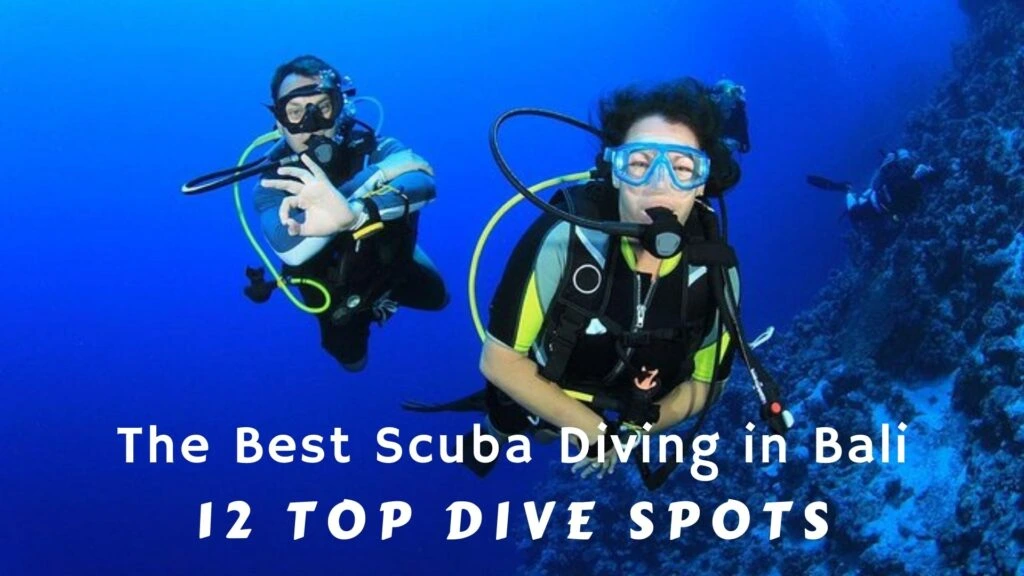
Are you searching for Scuba Diving Bali in Google for your future diving holidays in Bali? Bali is one of the most popular destinations for scuba diving in the world and we’ll show you now what are the best places to dive in Bali. Its crystal clear waters offer an abundance of marine life that make it a paradise for divers. And once you’ve wrapped your time out on the water, the area itself offers plenty of land-based activities to keep you busy. Bali provides world class dive sites without a doubt.
But before you take the plunge and explore this fantastic underwater world, there are some things that you should know about Bali scuba diving. Not only will this help to make your experience more enjoyable, but it will also keep you safe and informed. We’re here to share some helpful tips on where to dive, what you should bring with you, safety tips, and more!
Contents
Scuba Diving Bali – 12 Top Dive Spots
- Menjangan Island
- Seraya Secrets
- Tulamben’s USAT Liberty Shipwreck
- Amed
- Nusa Penida
- Nusa Penida Bat Cave
- Drop-off at Tulamben
- Gilimanuk’s Secret Bay
- Mangrove, Nusa Lembongan
- Shark Point, Padang Bai
- Jetty, Padang Bai
- Blue Corner, Nusa Lembongan
Now that you know what to expect when scuba diving in Bali, here are some of the best scuba diving sites to explore:
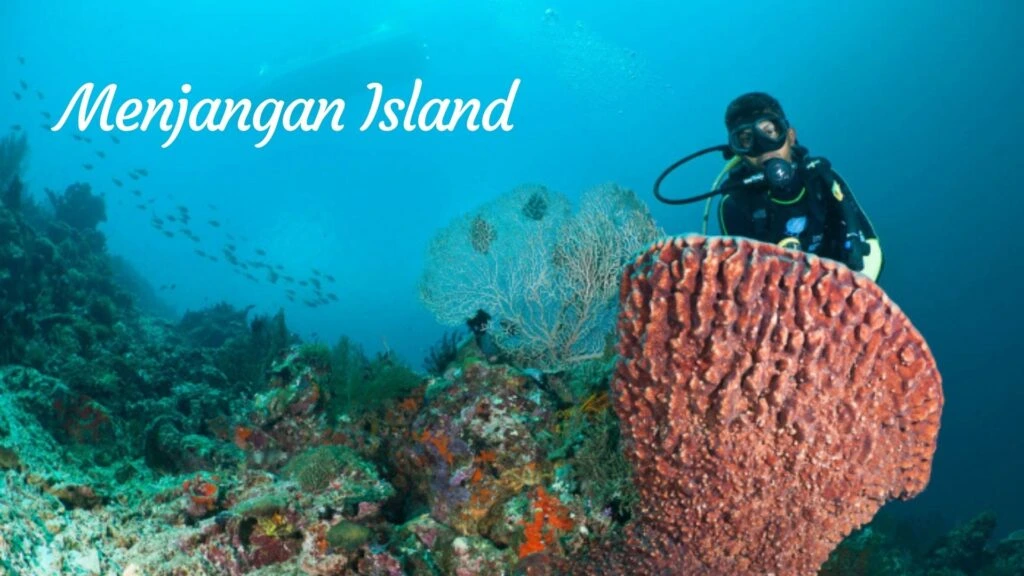
1. Menjangan Island
Menjangan Island is an ideal spot for scuba diving in Bali. Its pristine turquoise waters provide an incredible underwater experience, and the aquamarine surroundings are breathtaking. The abundance of shallow coral reefs and marine life makes it a paradise for any diver, no matter their experience level. You can thank the development of West Bali National Park in 1917 for preserving the area’s natural beauty.
There are a variety of dives to explore, such as shallow reefs, deep wall dives, and drift dives, ensuring that divers of all abilities can find something suitable. The healthy marine life preserves on Menjangan Island provide excellent opportunities to see dolphins, turtles, manta rays, and vibrant reef fish, while the occasional whale shark or hammerhead has been known to visit.
If you want access to the area, you’ll have to pay a small fee to enter the Nature Preserves Park, but once you’re in, there’s no limit to the incredible scuba diving Bali has to offer.
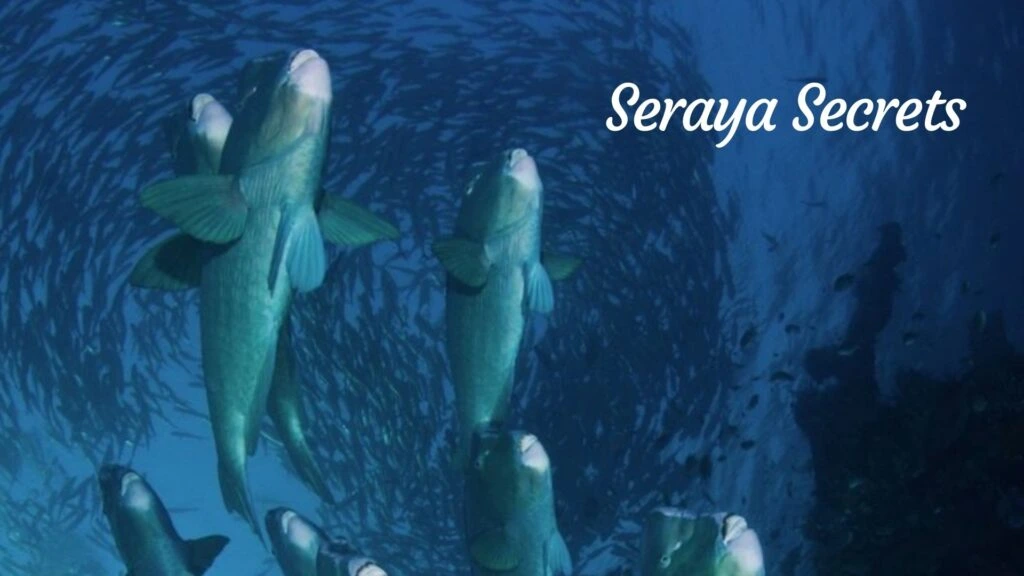
2. Seraya Secrets
Have you ever considered “muck diving” in Bali? Muck diving is a type of scuba diving that focuses on exploring the bottom of the ocean floor, where you might find unusual and unique marine creatures.
It may sound unappealing, but muck diving has quickly become one of the most popular activities for Bali scuba divers. The Seraya Secrets dive site, located on the east coast of Bali near Tulamben, is an ideal spot for muck diving and has become a hotspot for underwater photographers, thanks to its abundant coral gardens and fascinating marine life.
Seraya Secrets provides plenty of opportunities to spot unique creatures, such as cuttlefish, seahorses, ghost pipefish, and blue ribbon eels. It is also a great spot for night dives when some of the more elusive nocturnal creatures come out to play.

3. Tulamben’s USAT Liberty Shipwreck
The wreck of the USAT Liberty Ship is one of the most popular dive sites in Bali. This shallow dive site is located off the northeastern coast of Bali, on a black sand beach called Tulamben Bay.
This wreck is perfect for scuba divers of all levels, with depths ranging from 5 to 30 meters. The wreck is now home to an array of vibrant and colorful corals, sponges, and invertebrates. You can also spot some larger marine life inhabiting the sunken vessel, such as giant trevally, bumphead parrotfish, and sea turtles.
When you are there, make sure to visit with the locals of Tulamben village, who are more than happy to give you a history lesson about the USAT Liberty Shipwreck.
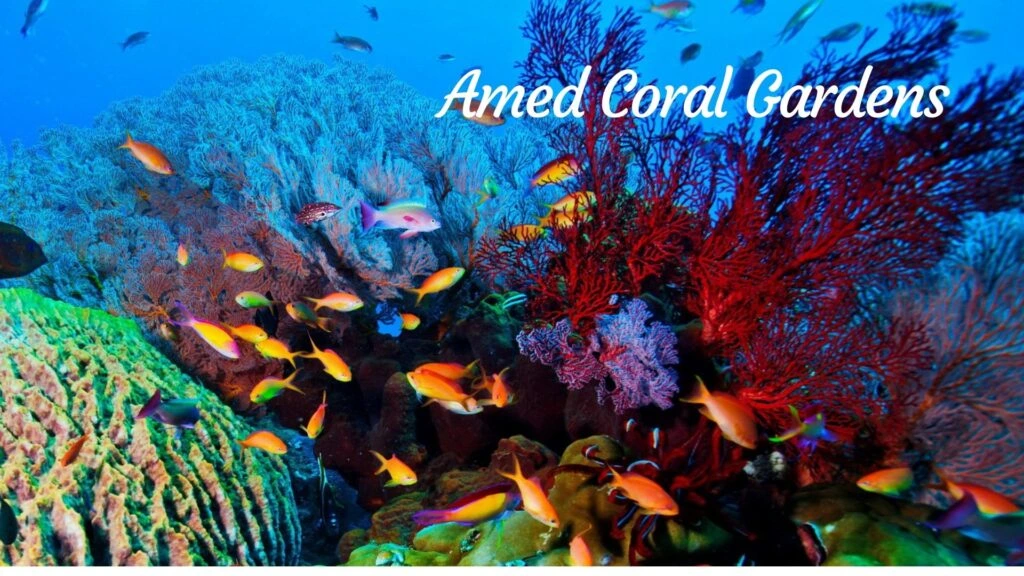
4. Amed
Another village located on the east coast of Bali is Amed. This small fishing village is home to an array of colorful coral gardens, and it’s a great spot for the best scuba diving in Bali if you want to avoid the tourist crowds.
Amed Diving site offers some of the most beautiful deep and shallow dives in the area, with depths ranging from 5 to 30 meters. There are also plenty of opportunities for wreck diving and night dives, giving divers a chance to explore the vibrant marine life that inhabits this area.
If you want to experience the diversity of Bali’s underwater world, then Amed is definitely worth a visit. A short ride on a traditional jukung will bring you to some of the most stunning dive sites in Bali. The locals of Amed often use these boats to access some of the more remote dive sites, so it’s definitely worth taking a ride.
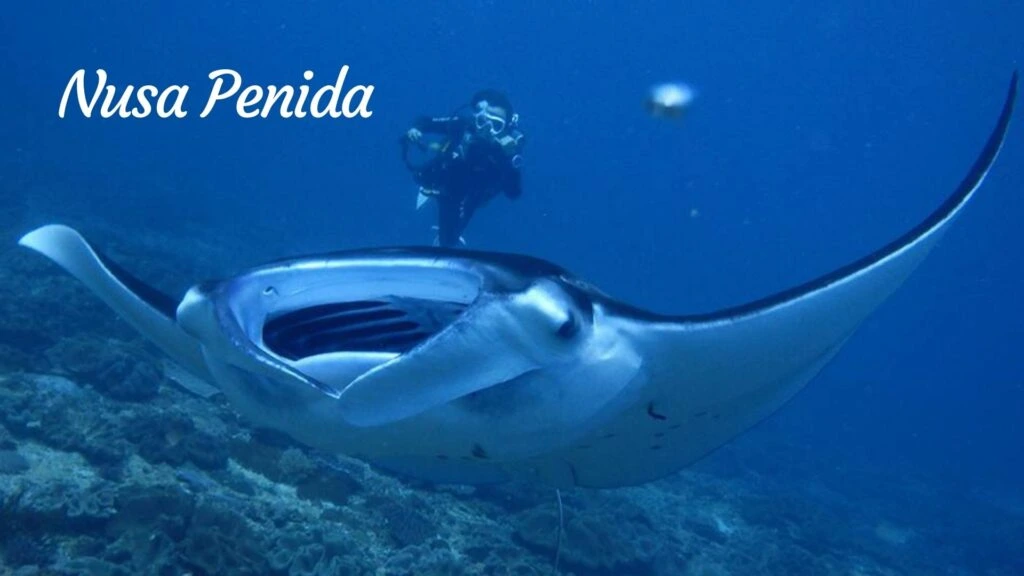
5. Nusa Penida
At the top of many scuba divers’ lists of must-see sites in Bali is Nusa Penida. Located just off the southeastern coast of Bali, this small island is home to many stunning dive sites, including Crystal Bay and Manta Point.
The waters around Nusa Penida are some of the most pristine in Indonesia, and they offer a unique blend of shallow coral gardens and deep drop-offs, making it the perfect spot for divers of all levels.
Crystal Bay is the most popular dive site in the area and provides a chance to get up close and personal with magnificent manta rays. Manta Point is another popular dive site where you can explore a vibrant coral garden filled with colorful fish and unique creatures.
No matter which dive site you choose, Manta Point and Crystal Bay at Nusa Penida is definitely unforgettable destination for scuba divers visiting Bali!
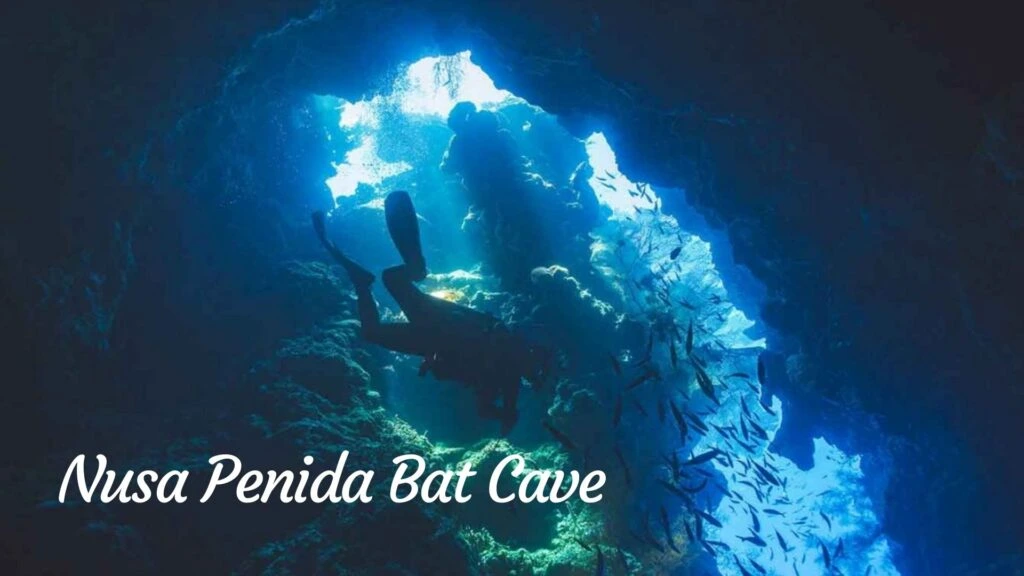
6. Nusa Penida Bat Cave
For an entirely different experience, venture to the Nusa Penida Bat Cave. Located near the village of Toyopakeh, this isn’t a dive for the faint of heart. At 30 meters deep, this is an intermediate dive best suited to experienced divers.
This cave is home to a large colony of bats and numerous species of marine life and is one of the few sites where you can get a close-up view of hundreds of bats in their natural habitat.
This dive is an experience like no other and definitely not for everyone, but if you are up for a challenge, then it’s worth giving it a try! Some brave divers have even reported seeing whitetip and blacktip sharks in the dark depths of the Bat Cave.
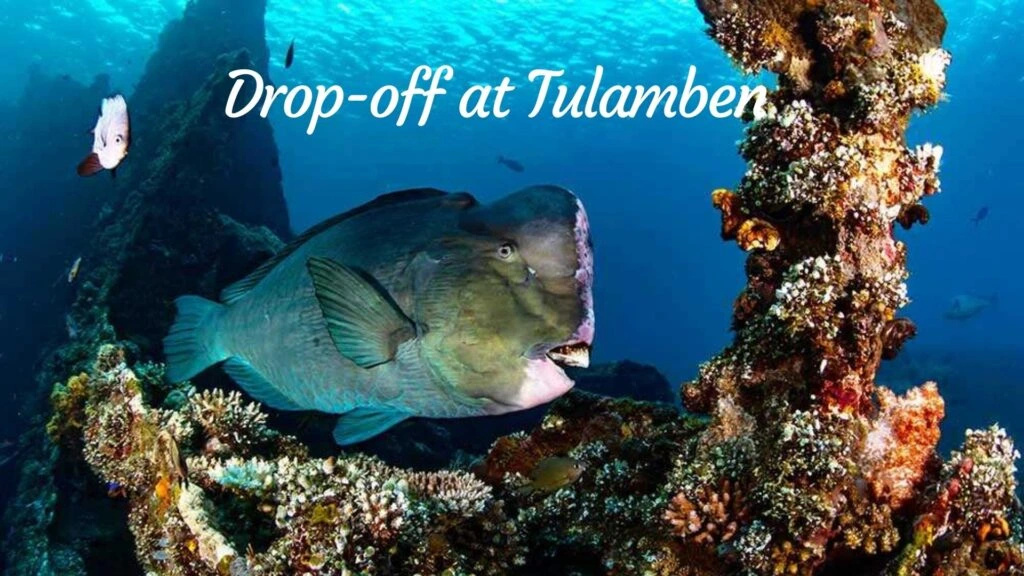
7. Drop-off at Tulamben
If you are looking for a thrilling dive, then a drop-off at Tulamben is definitely one you should consider. This dive site offers a unique combination of deep and shallow dives, making it perfect for advanced divers looking to explore the area’s depths.
The drop-off is located just off the coast of Padang Bai, and it features sharp drop-offs, coral gardens, and other underwater features. The currents at the site create perfect conditions for drift dives, allowing divers to explore further into deeper waters.
With depths of 40 meters, advanced divers may see schools of colorful fish and large pelagic species, such as barracuda and tuna. If you’re lucky, you may even spot a shark or two! Add this to your visit to the wreck dive at USAT Liberty Shipwreck, and you’ll have an unforgettable scuba diving experience in Bali.
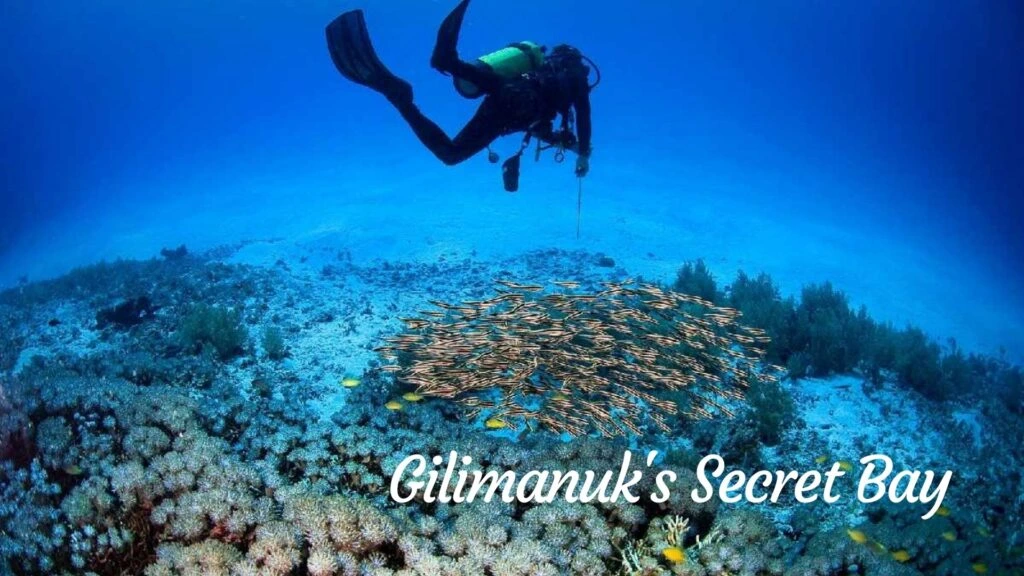
8. Gilimanuk’s Secret Bay
Another popular muck diving location in Bali can be found at Gilimanuk’s Secret Bay. This bay is located on the western side of Bali, and it offers a variety of macro critters for divers to explore. Menjangan Island is also not too far away, and this provides a great opportunity to combine the two locations into one dive trip.
With depths around 9 meters, this is an ideal location for beginner divers and experienced muckdivers alike. The black sands and dark waters of Secret Bay make for perfect conditions for spotting critters such as nudibranchs, frogfish, flatworms, and many others. You never know what strange and wonderful creatures you may find in this bay, making it a dive site that’s never the same twice.
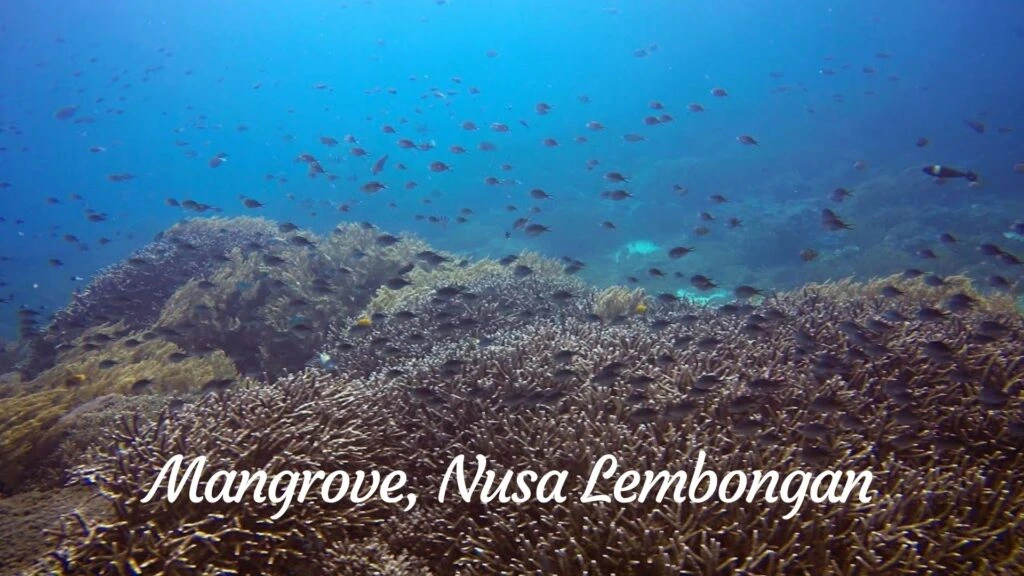
9. Mangrove, Nusa Lembongan
For a unique and captivating diving experience, scuba divers should head to the mangroves of Nusa Lembongan. Located just off Bali’s coast, this is one of Indonesia’s most beautiful and unusual dive sites.
Drift diving is the best way to truly take in the wonders of this dive site. This method of diving will allow you to slowly drift through the mangroves, taking in all their beauty. You’ll be surrounded by beautiful coral trees, swaying gently with the current and providing a home for an abundance of marine life.
You may see brilliant colorful fish grazing on the mangrove roots, moray eels lurking in crevices, and even the occasional seahorse. It can be a truly mesmerizing experience, so make sure to add this dive site to your list when you visit Bali!
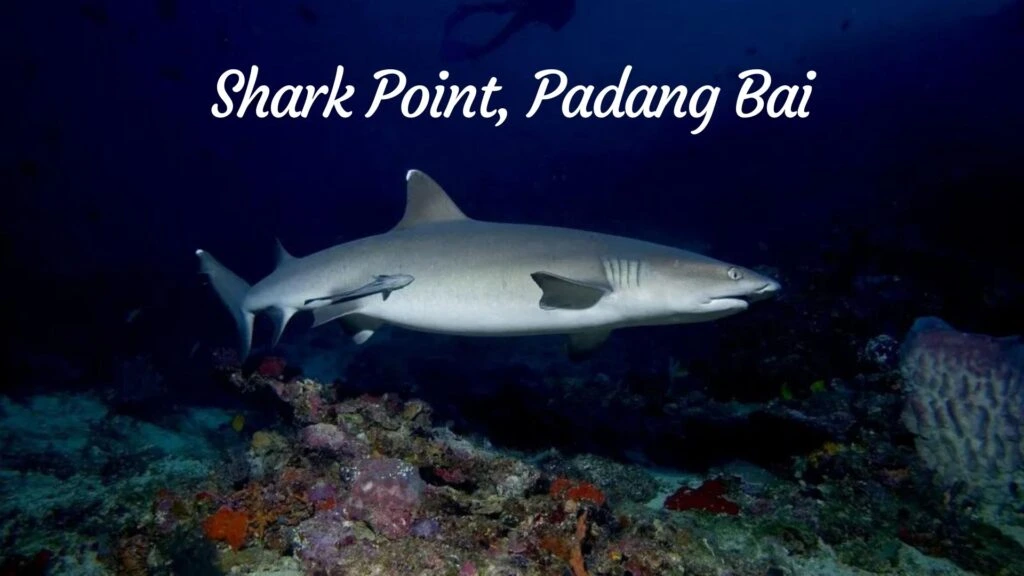
10. Shark Point, Padang Bai
Another popular dive spot in Bali is Shark Point in Padang Bai. This dive site is the perfect location for spotting various marine life, including sharks! The area is known to be home to many species of shark, including the occasional whale shark, making it an excellent spot for any aspiring underwater photographer.
The waters around Shark Point offer excellent visibility and depths that range to 25 meters. Here, you can expect to find healthy coral gardens, a plethora of fish, and maybe even some manta rays or turtles.
If you’re lucky enough, you may get the chance to spot some of these majestic creatures in their natural habitat. It’s an unforgettable experience that will stay with you long after your dive is over!
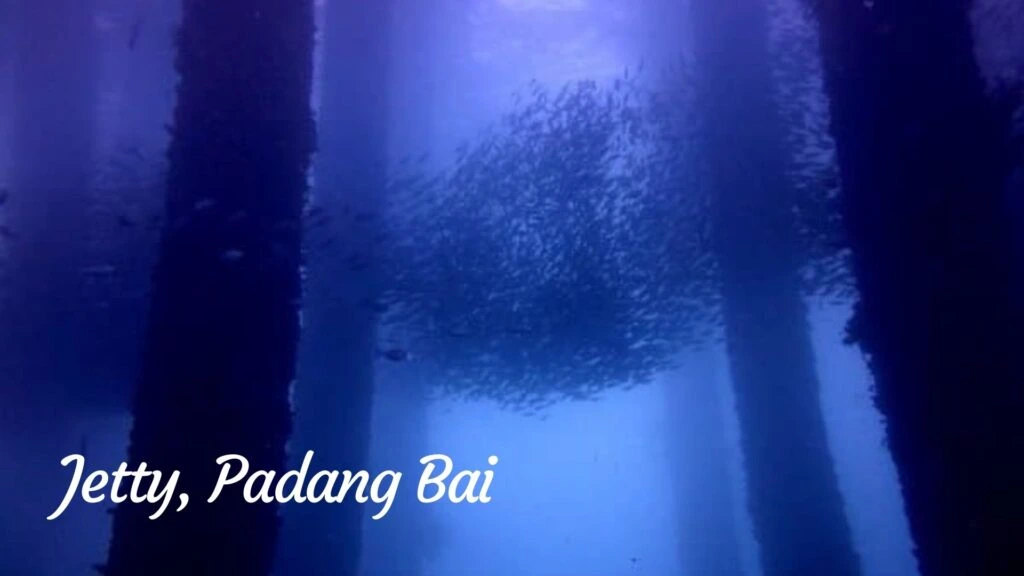
11. Jetty, Padang Bai
Another hot spot for scuba divers in Bali is the jetty at Padang Bai. This area offers an exciting mix of muck and reef diving, making it perfect for both beginner and experienced divers.
The jetty provides a great opportunity to explore some of the island’s lesser-known sites. As coral has built up around the jetty itself, it is now home to a variety of vibrant marine life. You’ll have the chance to spot walls of colorful corals and fish, along with some occasional sightings of small sharks and rays!
You may find that specific parts of the jetty are closed off to divers due to ongoing construction, so always be sure to check with a local dive center before making any plans.
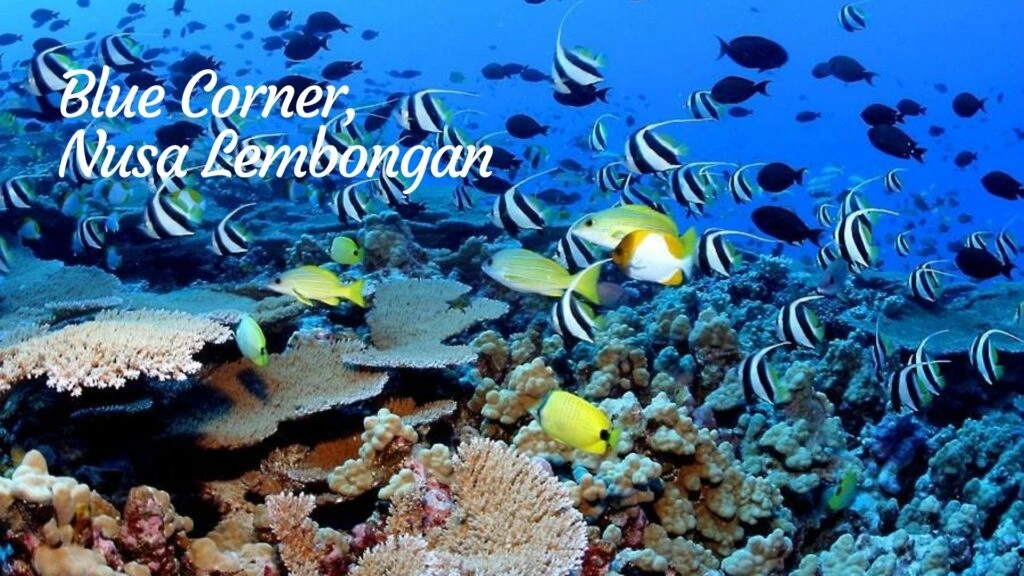
12. Blue Corner, Nusa Lembongan
The last stop on our list of the best dive sites in Bali is Blue Corner, located off the coast of Nusa Lembongan. This site is considered to be one of the most thrilling dive sites in all of Indonesia, and for good reason!
Here you will find depths that reach up to 40 meters, making it a great spot to catch a glimpse of some of the larger creatures that live in the ocean. These include sharks, rays, and turtles, among others. Blue Corner’s dive is located within the current, making for excellent visibility up to 40 meters and allowing for truly spectacular views.
This dive site is ideal for experienced divers as the currents can be very strong, so make sure you know what you’re doing before taking the plunge. Blue Corner is a must-visit spot when diving in Bali with its many beautiful sights and creatures.
Is Bali good for scuba diving?
Bali is a popular destination for scuba diving, with a variety of dive sites that cater to divers of all levels. The crystal clear waters and diverse marine life make it an ideal location for both beginner and experienced divers. Some popular dive sites in Bali include Tulamben, Menjangan Island, and Nusa Penida. Overall, Bali is considered a good destination for scuba diving.
Where can I dive for beginners in Bali?
There are several good options for beginner divers in Bali.
1. Sanur: This area has shallow dive sites with gentle slopes and minimal currents, making it ideal for beginner divers.
2. Padang Bai: This area has a number of dive sites suitable for beginner divers, with calm waters and an abundance of colorful fish and coral.
3. Menjangan Island: Located in the northwest of Bali, this island is known for its clear waters and easy diving conditions. It is a great place for beginner divers to see a variety of marine life, including turtles and colorful fish.
4. Tulamben: Located on Bali's east coast, this is where divers can see the famous USS Liberty shipwreck. Tulamben is a beginner friendly dive spot.
What are the best dive sites in Bali?
Bali has many great dive sites, but some of the most popular ones include Nusa Penida, Tulamben, Amed, Padang Bai, and Menjangan Island.
When is the best time of year to dive in Bali?
The best time to dive in Bali is between April and November, during the dry season when visibility is at its best. However, Bali is a year-round diving destination and diving is still possible during the wet season (December to March).
What types of marine life can I see while diving in Bali?
Bali is known for its rich marine biodiversity, and divers can expect to see a variety of fish, turtles, sharks, rays, eels, and colorful coral reefs. Mola mola (sunfish) and manta rays are also popular sightings in Bali.
Do I need to be a certified diver to go scuba diving in Bali?
No, you can do a Discover Scuba Diving program with a certified instructor if you are not a certified diver. However, if you plan on doing multiple dives or diving on your own, you will need to be certified.
What level of certification do I need to dive in Bali?
You can dive in Bali with an Open Water Diver certification, but some dive sites may require an Advanced Open Water certification due to their depth or current.
What is the visibility like in Bali?
The visibility in Bali can range from 10 to 40 meters (30 to 130 feet), but is generally good year-round.
Are there any dangerous marine animals in Bali?
While encounters with dangerous marine animals in Bali are rare, it is still important to exercise caution and be aware of your surroundings. Sharks and other predators are generally not a threat to divers.
Are there any restrictions on diving in Bali due to COVID-19?
The situation in Bali is constantly changing, so it is important to check the latest local regulations and requirements before planning a dive trip. It is also important to follow safe diving practices and maintain social distancing and other COVID-19 protocols.
What Do I Need To Know About Scuba Diving in Bali?
In order to safely explore the waters of Bali, there are a few tips and tricks that you should know.
1. Know Your Certification Requirements
To take advantage of the world of Bali scuba diving, you must be certified. Most dive shops will require proof of certification and training before they allow you to go out on the water. The most common certification course is the PADI Open Water Course, which is available at most dive shops in the area.
The PADI Open Water Course is a two to four-day program that covers the basics of a scuba dive, such as underwater skills, safety procedures, and basic navigational techniques. You’ll take practice dives to get used to the equipment and learn how to use it safely.
2. Know What Gear You Need
When packing for your Bali scuba diving adventure, ensure you have all the right gear. This includes a mask, fins, snorkel, wetsuit, or drysuit (depending on the water temperature), weights, buoyancy compensator (BCD), and regulator.
Having the right gear is essential for comfort and safety, so make sure that you are well-equipped before getting in the water. The last thing you want is to be unprepared when diving in unfamiliar waters!
3. Know How to Stay Safe
Safety is always the top priority regarding the best scuba dive experience. It’s important to follow all of the safety protocols and guidelines that you were taught in your certification course. This includes limiting your dive time, staying with a buddy, being aware of currents and visibility conditions, and monitoring your air consumption.
If you are going scuba diving in Bali, make sure that you are aware of any specific safety guidelines in the area. Do your research on the local marine life, be aware of any potential hazards, and always stay with a buddy if possible.
4. Know the Top Dive Sites
It doesn’t matter if you’re a beginner or an experienced diver – there are plenty of amazing dive sites to explore in Bali. Some of the top spots include Nusa Penida, Menjangan Island, Tulamben Wreck, and Padangbai. Each site offers something unique and spectacular for divers of all levels, so do your research and plan ahead.
In the next section, we will break down some of the top dive sites in Bali and what you can expect to see when you get there.
How to Choose Your Dive Center Sanur
Choosing your dive shop Bali is the first step towards experiencing Bali’s famous diving and snorkelling spots. You will discover that the available options are significant and each dive center with its own advantages and disadvantages. If you stay in Bali’s south or west coasts, best and perhaps the only choices should be made between one of the dive center sanur.
The reasons behind your decision which dive center sanur to use should be first safety and reviews. Price is of course important but it should not be the primary filter for your dive operator. All of the dive center sanur visit the same dive spots and dive sites but all of them provide different services.
For us, we focus on safety and quality above all with proper equipment checks, day and safety briefing before the trips, and highly experienced diving team. The diving equipment is regularly maintained and renewed every few years.
Our stunning dive training swimming pool stands ready for any courses or pool refresher sessions when necessary, an advantage that the majority of the other dive centers do not have which on other hand allows them to maintain a very cheap price.
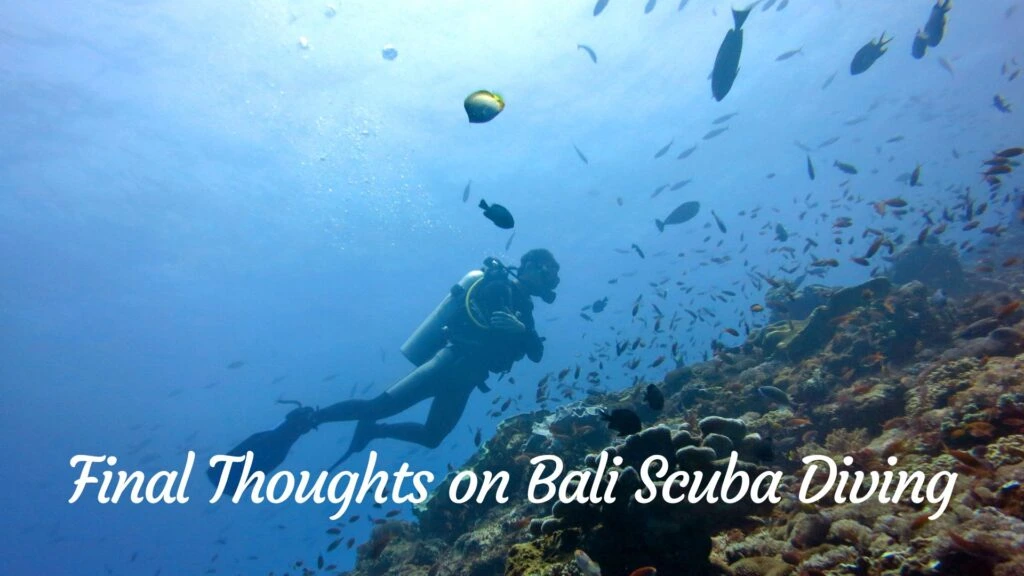
Final Thoughts on Scuba Diving Bali
Bali is an incredible destination for scuba diving, and it’s easy to see why. With so many amazing dive sites to explore, you will surely have a memorable experience no matter where you decide to take the plunge. Whether you’re a beginner or an experienced diver, Bali has something for everyone!
Each location on this list has a variety of marine life to explore and its own unique characteristics that make it special. The key to a perfect dive in Bali is to determine which site is best for you based on your experience and what you’re hoping to see.
No matter which dive site you choose, the beautiful waters of Bali are sure to treat you right! So make sure to add some or all of these sites to your list when planning your next scuba adventure in Bali. Happy diving!
If you are looking at moving beyond Bali, you should definitely consider the Komodo National Park, an easy 45 minutes flight from Bali, where liveaboard diving is at its best.